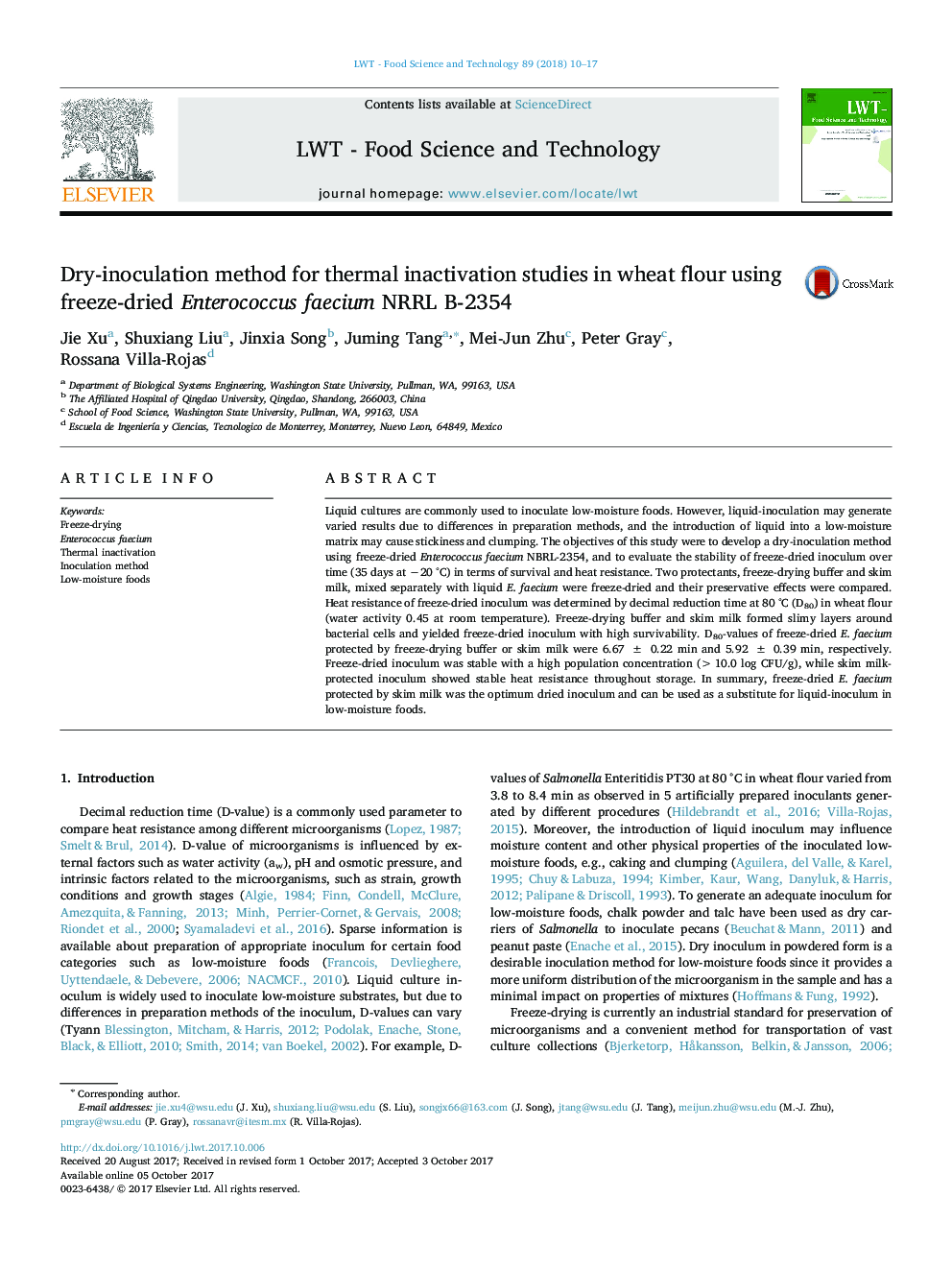| Article ID | Journal | Published Year | Pages | File Type |
|---|---|---|---|---|
| 8891813 | LWT - Food Science and Technology | 2018 | 8 Pages |
Abstract
Liquid cultures are commonly used to inoculate low-moisture foods. However, liquid-inoculation may generate varied results due to differences in preparation methods, and the introduction of liquid into a low-moisture matrix may cause stickiness and clumping. The objectives of this study were to develop a dry-inoculation method using freeze-dried Enterococcus faecium NBRL-2354, and to evaluate the stability of freeze-dried inoculum over time (35 days at â20 °C) in terms of survival and heat resistance. Two protectants, freeze-drying buffer and skim milk, mixed separately with liquid E. faecium were freeze-dried and their preservative effects were compared. Heat resistance of freeze-dried inoculum was determined by decimal reduction time at 80 °C (D80) in wheat flour (water activity 0.45 at room temperature). Freeze-drying buffer and skim milk formed slimy layers around bacterial cells and yielded freeze-dried inoculum with high survivability. D80-values of freeze-dried E. faecium protected by freeze-drying buffer or skim milk were 6.67 ± 0.22 min and 5.92 ± 0.39 min, respectively. Freeze-dried inoculum was stable with a high population concentration (>10.0 log CFU/g), while skim milk-protected inoculum showed stable heat resistance throughout storage. In summary, freeze-dried E. faecium protected by skim milk was the optimum dried inoculum and can be used as a substitute for liquid-inoculum in low-moisture foods.
Related Topics
Life Sciences
Agricultural and Biological Sciences
Food Science
Authors
Jie Xu, Shuxiang Liu, Jinxia Song, Juming Tang, Mei-Jun Zhu, Peter Gray, Rossana Villa-Rojas,
